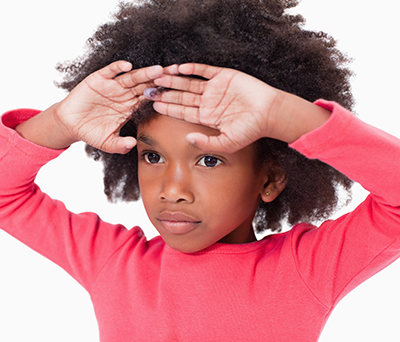
For adults, an occasional headache is just a minor inconvenience. But when a child has a headache, parents often jump to conclusions and think about the worst possible diagnosis.
Mary Epperson, NP a pediatric nurse practitioner with the Headache Clinic at St. Louis Children’s Hospital, explains, “Contrary to what parents think, headaches are not unusual in kids. They are one of the most common reasons children see a pediatric neurologist. However, the usual diagnosis is a migraine or tension headache – it is rare to have a brain tumor.”
It is important to let your pediatrician know if your child complains about headaches. Pediatrician Kristine Williams, MD, MPH, a Washington University clinical associate at University Pediatric Associates says, “Headaches that should get a parent’s attention usually come with high fever, fatigue, vomiting, stiff neck or rash. Very young children can’t always tell you they have a headache – but they may be very sleepy or cranky.”
TENSION HEADACHES are common in children. Stress and mental or emotional conflict are often triggers for tension headaches. The most common symptoms include:
Slow onset of the headache
Head usually hurts on both sides (but can hurt on back of head or neck)
Pain is dull or feels like a band around the head
Pain is mild to moderate – not severe
Pain that affects child’s sleep habits
MIGRAINE HEADACHES are the most common type of acute-episodic headaches. Dr. Williams explains, “Migraines can occur in children as young as two to three years old. Migraines are more common in teenage girls and sometimes get worse around the time of the menstrual cycle. Stree, anxiety, lack of adequate sleep or some foods can also trigger migraines.”
The most common symptoms of migraines include:
- Moderate or severe pain (throbbing or pounding) on one or both sides of the head, ear, jaw or around the eye
- Nausea and/or vomiting
- Disturbed vision
- Sensitivity to light or noise
- Exacerbated by activity
- Relieved by sleep
Migraines can also involve neurological symptoms such as an aura (flashing lights, zigzag lines or temporary loss of vision) 10-30 minutes before an attack.
CLUSTER HEADACHES usually start in children older than 10 years of age, and are more common in males. They usually occur in a series that may last weeks or months. While every child’s symptoms can be different, the most common ones are:
- Severe pain on one side of head, usually behind one eye
- Affected eye may have a droopy lid, small pupil, or redness and swelling of the eyelid
- Runny nose or congestion
- Swelling of the forehead
Epperson says, “Treatment and therapy options for migraine include medication, lifestyle modifications and relaxation techniques. Regular sleep patterns, as well as a healthy diet that limits nitrates, preservatives, caffeine and sugary drinks, can be very effective pro-active treatments to help reduce headaches in children.”
She adds a few headache symptoms are red flags that could indicate a more serious problem:
- Headache with increasing severity and frequency within a short time period
- A child who has never had headaches before who suddenly starts having them very frequently
- Headaches that regularly wake a child at night
- Early morning headaches with vomiting
- School grades decline or changes in behavior (aggression or regression)
The St. Louis Children’s Hospital Headache Clinic sees physician-referred patients. The clinic provides diagnosis, therapy and treatment for a wide variety of headaches. Physicians should call 800-678-4357 to make a referral.
To make an appointment with Dr. Williams, a pediatrician at University Pediatric Associates, please call 314-454-6400.
St. Louis Children’s Specialty Care Center
13001 North Outer Forty, Suite 310
St. Louis, MO 63017